The Mini-Loop: circumnavigating Tilghman Island in Maryland's portion of the Chesapeake Bay proves to be an entertaining voyage.
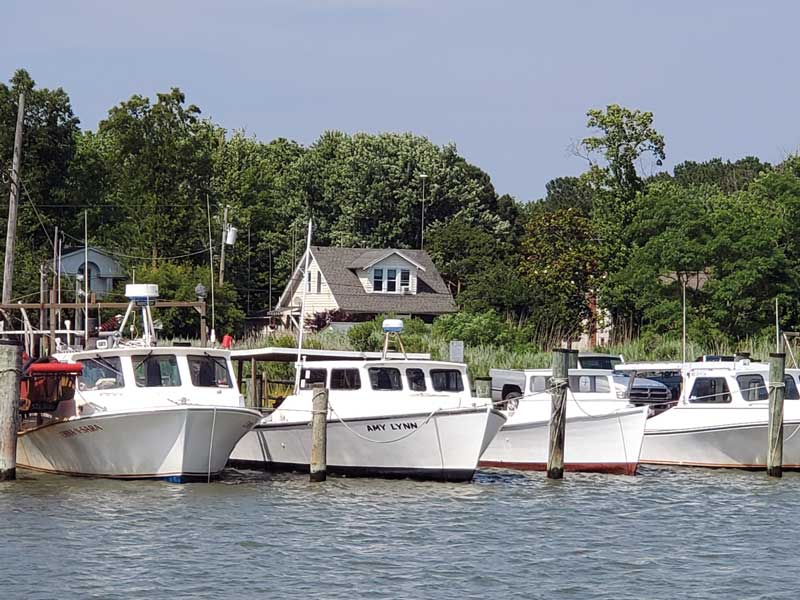
John Glenn went around the world three times in a little under five hours in 1962. Magellan’s ship Victoria took three years to perform the same feat… albeit without the Portuguese explorer who had been killed in a skirmish with natives in the Philippines. Jules Verne’s Phileas Fogg and his trusty manservant Passepartout banked a 20,000-pound payday after going ‘round the world in 80 days.
Thousands of boaters spend countless hours navigating all, or part, of the 6000-mile Great Loop. Locals circumnavigate the DelMarVa peninsula as part of their mid-Atlantic bucket list. A credible list of accomplishments, to be sure.
Circumnavigating Tilghman Island
But closer to home, your faithful reporter can claim his own circumnavigation of an Eastern Shore landmark: a voyage of no fewer than 10 miles conducted over the course of four hours (two of which were consumed while quaffing a beer and downing some oysters from the sundrenched porch of Tickler’s Crab Shack).
The voyage: circumnavigating Tilghman Island.
“Don’t laugh,” says Tilghman Island Marina manager Ron Cicero. “If the wind picks up and the tide is running against you, parts of that little trip can turn just a bit nasty.”
Ron ought to know. He and his wife, Nancy, have run the marina since 1999. Part of their product offering are rental boats, kayaks, and SUPs. Ron even conducts ‘round the island’ tours.
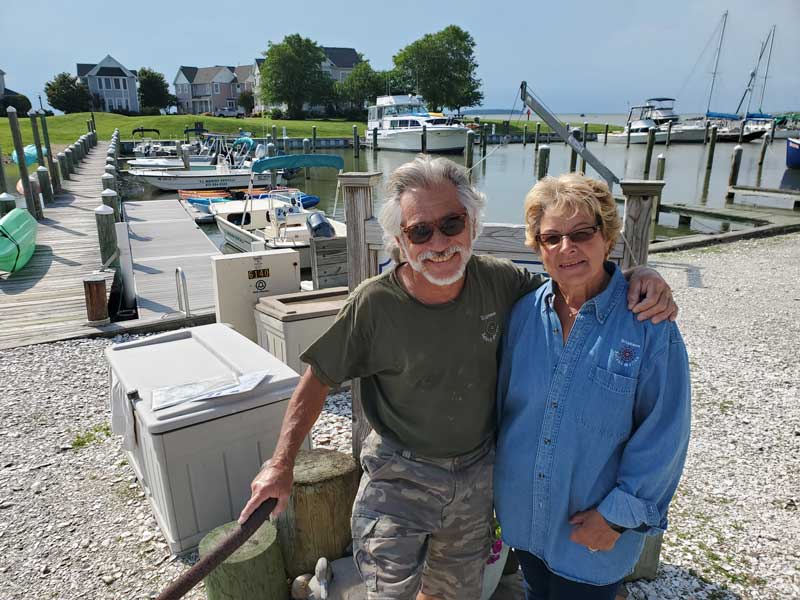
“We rent all sizes of boats, whatever is best suited to the skills of the renter. We used to rent to almost anybody. Now, we are careful. We have a comprehensive booklet the renter must sign off on. We prefer a license but with experience you can get a boat as well.”
Ron and his wife Nancy of 22 years run a tight ship. “I don’t go near the books,” the transplanted New Jerseyite says with a laugh. “I don’t let her near my outboards.”
Most Bay boaters know Tilghman Island and the convenient Knapp’s Narrows shortcut as a quick and easy way from the Northern Bay to the friendly confines of the Choptank River. As many as 20,000 boaters pass through the Narrows each year.
The ever-changing channel leading to the Narrows has confounded many a boater, and the steady stream of boat traffic necessitating a bridge opening keeps the Tilghman Island bridge keeper on his toes. “They call the bridge the busiest bridge on the East Coast... if not in the whole country,” says Cicero. “Folks say it opens 10-12,000 times a year. It’s a demand bridge. Just hail the bridge keeper on Channel 13 and up she goes.” The bascule bridge was constructed in 1998 replacing the 64-year-old previous structure which was moved to the entrance of the nearby Chesapeake Bay Maritime Museum in St. Michaels.
Rooted In the Past
The soul of the town remains rooted in the past. The passage of time is marked by the throaty growl of dozens of diesel engines as they rumble, belch, and fume while carrying their watermen masters out to the Bay for another day of hoping beyond hope that, “This is the day the tide will turn, and we’ll see oyster and fish yields like we used to.” Set to the tempo of a blaring klaxon horn that announces yet another Knapp’s Narrows Bridge opening, Tilghman moves to its own unique vibe.

“Lots of boaters just keep on going once they hit the Narrows,” Tilghman Island Maritime Museum co-founder Hall Kellogg says with a shake of his head. “I tell people to slow down… take a slip at one of our marinas, rent a bike, go exploring, have a great lunch or dinner, and be sure to come by the museum to say ‘hi’ and learn something about the important role our watermen have played in the development of the Eastern Shore.”
Originally called Great Choptank Island, the one-mile long, three-square mile island takes its present name from one of its early owners, the Matthew Tilghman family, which acquired the island in 1752. During the War of 1812, the island was briefly occupied by the British, who obtained provisions for their military forces. Initially a farming community, Tilghman at one time was the busiest seafood processing location on the Eastern Shore. Scores of commercial fishing boats remain as does one of the largest concentrations of historic skipjacks on the Eastern Shore.
“In its heyday,” says Kellogg, “the Tilghman Island Packing Company employed upwards of 700 people. Not to mention the scores of watermen who provided the fresh crabs, oysters, and fish that kept the packing house busy 18 hours a day.” The plant closed for good in 1975.
When the plant was churning out processed seafood, the town around it was booming as well. “The town had eight to 10 gas stations and five post offices. Well-kept residential areas were populated by local watermen. We had three schools. Now, we’re a sleepy little slice of Americana where people come to retire, kick back, and enjoy life.”
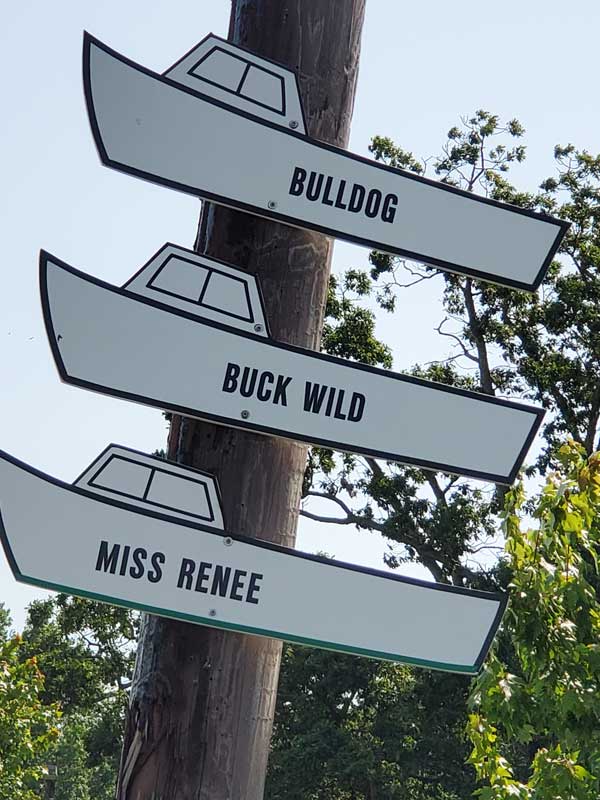
Kellogg, his wife Mary, and a core of volunteers have built the museum into an in-depth repository of Tilghman history. “We started out in the old barbershop capturing the stories of the watermen. Sooner or later, people came by with artifacts which they wanted to donate. We eventually renovated a classic Tilghman Island ‘W’ house to serve as our headquarters.” There, visitors can immerse themselves in island history and spend hours watching an amazing collection of first-person video interviews detailing the lives of some of the island’s original watermen. Currently, the museum has recorded the stories of 82 watermen. Many have since passed away after their oral histories were recorded.
“The island waterman is a dying breed,” says Kellogg. “The younger generation just isn’t taking over. It’s not that they are afraid of work. I think regulations that make it hard to crab or oyster are taking its toll.” Kellogg says today’s watermen are good conservationists. “All they want is input into the regulations. They tell me ‘It’s not my crabs at stake… it’s the crabs of my kids.’”
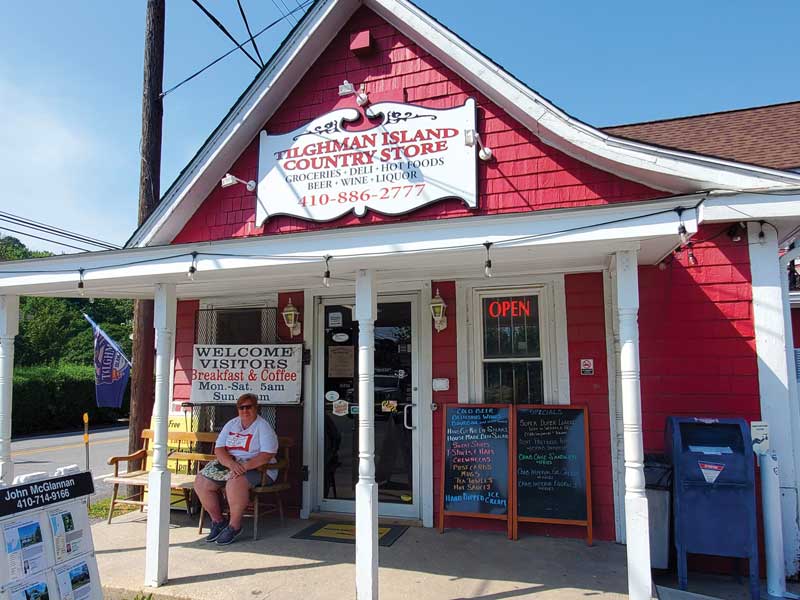
Where To Eat and Stay
No fewer than five eateries serve the 500 or so locals who call Tilghman home as well as the hundreds of day trippers and boaters who stop off on the island in search of a bite of ‘just caught’ seafood so fresh you can hear the watermen’s colorful accents as you take your first bite. Locals and boaters alike flock to Two if By Sea for one of the most mouth-watering breakfasts anywhere to be found. The restaurant can be accessed easily with a rental bike from the Narrows, or take the short stroll up for a little pre-feasting exercise.
If you need to provision your larder, be sure to stop by the Tilghman Island Country Store. The market is packed with goodies to make your boat stay perfectly delicious. Again, the store is a short walk from the bridge.
Three venerable inns provide land-based accommodations:
- Wylder Hotel Tilghman Island sits on nine acres of lush ground and private waterfront property. Home to Tickler’s Crab Shack and Bar Mumbo and a private marina with 25 boat slips, the resort features a saltwater pool, bocce court, and lawn games. The hotel has 54 rooms for accommodations.
- The newly renovated Tilghman Island Inn offers guests their choice of 20 rooms with private dockage. Their white-tablecloth restaurant is one of the island’s finest.
- The Black Walnut Point Inn bed and breakfast located at the end of the Island boasts seven rooms with breathtaking views. A stay at the Black Walnut puts you in the lap of luxury.
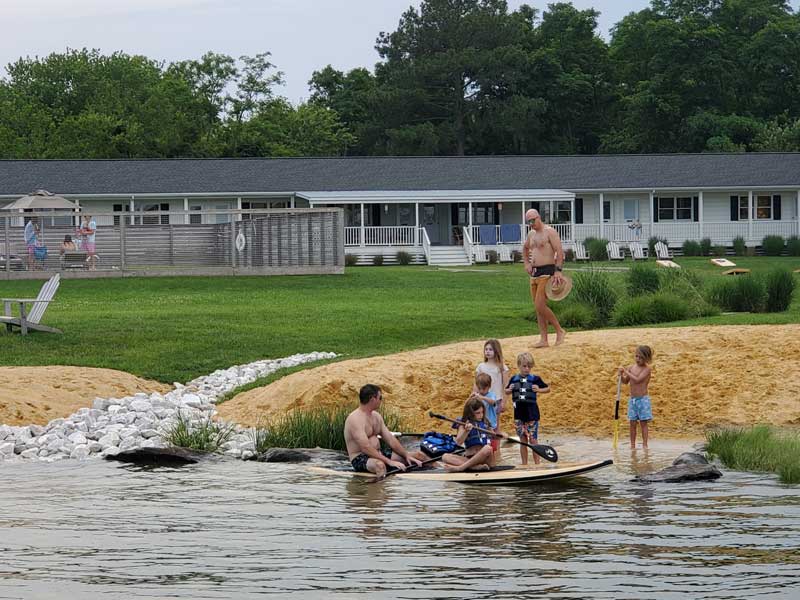
Boaters can take their pick of marinas depending on their inclination.
Your reporter is partial to the Tilghman Island Marina, located on the southwest side of the entrance to the Narrows. But that’s because owners Ron and Nancy have been helpful with the logistics of my circumnavigation. I’ve also tucked my boat into Knapp’s Narrows Marina on the north side of the Narrows where I could keep track of late-night bridge openings as the warning klaxon sounds each time the gates either go up or down. I can vouch for the quality of facilities as well as the ease of renting bicycles for a little Island exploring by land.
Paddling the Island
In the pursuit of as much local knowledge as possible, I met with Tilghman Island’s standup paddleboard ambassador Kate Richards. The 57-year-old personal wellness consultant has lived on Tilghman Island for 15 years. “I guess you’d call me a ‘come here’ because my family and I ‘came here’ from somewhere else.”
Kate grew up on the Bay sailing with her father Captain Mike. “We’d end up in Harris Creek and Dun’s Cove for our overnights and would poke around the Tilghman shoreline as we made our way around the island towards our overnight anchorage.”
Kate has paddled around Tilghman countless times. As a matter of fact, at press time she was in the middle of planning a paddleboard island circumnavigation in mid-July. “Depending on the wind and tide,” she says, “I’ll start at Knapp’s Narrows and go around the outside, planning to hit the end of the island at slack tide.
The waters around the point can get confused if the wind sets up the waves. Best to power through that area as quickly as you can.” Kate recommends gunkholing along the way searching for sea glass and admiring the seabed as she paddles five feet above the waters’ surface. “You can see a lot from that vantage point. Rays, seagrass, horseshoe crabs… they’re all visible when I’m paddling around the island.”
Kate cautions boaters to have their wits about them when transiting the Narrows. “You’ve got to remember that this is the waterman’s channel. You need to be mindful of their comings and goings. And if you’re paddling or in a small boat, be careful around the bridge. The current can come ripping through there and get you into trouble pretty quick.”
Kate also cautions boaters to be mindful that channel markers on both sides of the bridge honor the “red right returning” axiom. “You are returning to the top of the island either way you approach it,” she says.
An avid paddleboarder, Kate is currently training for the end of August Chesapeake Bay Paddle 150.
The Circumnavigation Route
My circumnavigation of Tilghman started at the Tilghman Island Marina. There, Ron, his wife Nancy, and I loaded into his 23-foot custom “Skifftoon” (a modified Carolina skiff hull fitted out with comfy pontoon-style seating.) Ron rents the Skiftoon to qualified boaters for $650/day. Well worth it for the seaworthiness and comfort.
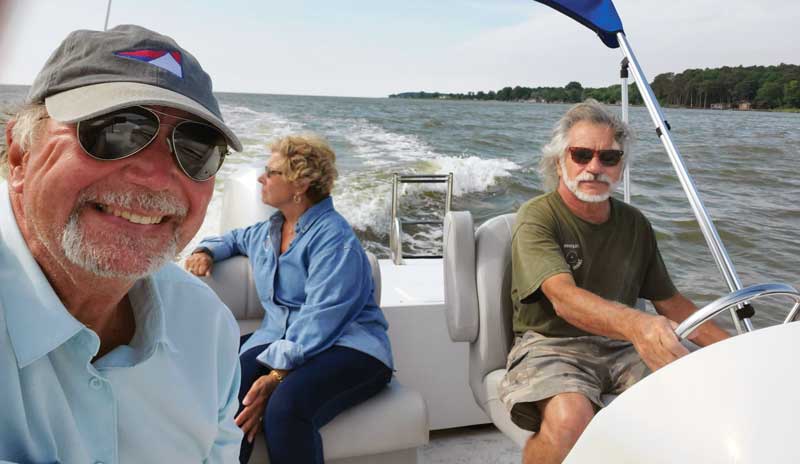
The total distance we covered as we loafed around the island was a little over 12 miles. That allowed for us to poke into Dogwood Harbor to take a look at some of the skipjacks docked there, as well as a careful entrance to Black Walnut Cove which, because of silting, is currently off limits to all but the shallowest of draft vessels.
At the northern end of the island, Ron recommended we reconnoiter about the only place locals recommend for anchoring out: Dun Cove just off the wide and deep Harris Creek. The cove is deep and wide enough for several boats to raft up. “Holding is good on the bottom, and you are pretty well protected from the wind. Much better than anchoring out along the coast,” Ron says.
Although technically not part of Tilghman Island, Lowe’s Wharf Marina Inn located two miles east of Poplar Island on Ferry Cove is a great place to start an Island adventure. It’s a mini resort with waterfront guest rooms, a sand beach, rockin’ beach bar with weekend music, and a field of mooring balls you can pick up for worry free dining.
Another off-island activity is a tour of the 1170-acre spoil island, Poplar Island. Sitting two nautical miles northwest of the Tilghman entrance channel, the island is an international model of the beneficial use of dredged material.
In 1847, Poplar Island boasted more than 1100 acres. During the early 1900s, the island supported a thriving community of about 100 residents, several farms, a school, church, post office, and a sawmill. By the 1920s, residents began leaving the island as more and more of its landmass fell victim to erosion. The island’s remains were still used as a retreat in the 1930s and 1940s, and Presidents Franklin D. Roosevelt and Harry S. Truman were among its visitors. By the early 1990s, all that remained of the original island were several small clusters of islets rising just above the surface of the water. Reduced to about four acres, Poplar Island’s disappearance seemed imminent. The active restoration project has a goal of restoring more than 1200 acres of marine habitat. To schedule a tour of the Paul Sarbanes Ecosystem Restoration Project, call (410) 770-6503 or email [email protected].
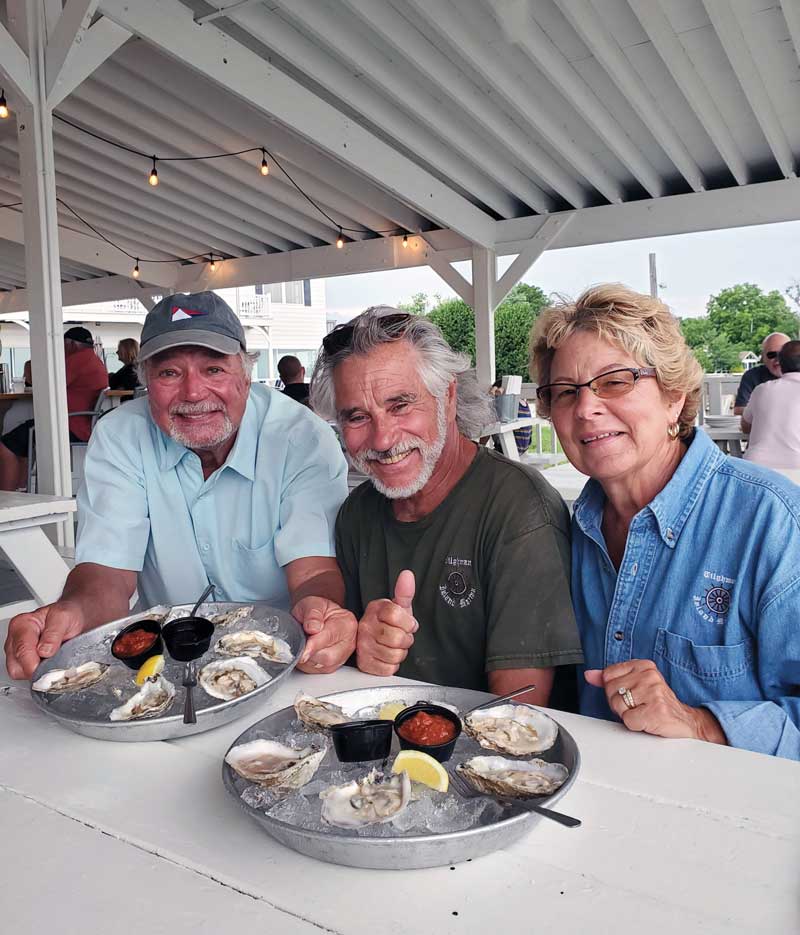
Ron, Nancy, and I capped off our mini circumnavigation with a stop at the Wylder Hotel’s popular waterside dining venue: Tickler’s Crab Shack & Restaurant. Plenty of dockage, easy in and out, and great food. We feasted on crab dip, BBQ pork, and a sampling of local Choptank oysters plucked fresh from the water. I was partial to the Choptank Sweets while Ron was more inclined to the Choptank Terrapins. The oyster bar features at least six different oyster styles, each worth sampling with a frosty glass of beer or a crisp chardonnay.
When we pulled into Ron’s marina, I thanked the effusive Tilghman Islander for his hospitality.
“We’ve got a really cool thing going here on Tilghman. People just need to slow down and let us show them how rewarding island life can be.”
As circumnavigations go, this one was easy going. No pirates. No life-threatening storms. No worries. But I did find enough to see to warrant another trip sometime down the road. Four hours around the island didn’t seem like a very long time. Maybe that’s because, as locals like to say, “time stands still on Tilghman.”
Story and Photos By Craig Ligibel